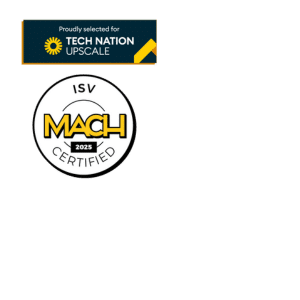What is Product Enrichment?
Product enrichment is the process of enhancing product information with additional details, attributes, and digital assets to create a more comprehensive and appealing product listing. It involves adding high-quality images, detailed descriptions, specifications, and other relevant data to improve the overall quality and findability of product content in e-commerce and retail environments.
In-Depth Explanation of Product Enrichment
Why It Matters
Product enrichment is essential in today’s competitive eCommerce landscape. With consumers increasingly shopping online, detailed and accurate product information has become a key differentiator for businesses. By providing rich, high-quality product data, companies can build trust with customers, reduce returns, and improve their search engine rankings. This ultimately leads to increased sales and customer satisfaction.
How It Works
Product enrichment involves collecting, organizing, and enhancing product data from various sources. This process typically starts with basic product information provided by manufacturers or suppliers. eCommerce businesses then supplement this data with additional details, such as high-quality images, videos, 360-degree views, customer reviews, and detailed specifications. Advanced technologies like artificial intelligence and machine learning are often employed to automate and streamline the enrichment process.
Key Benefits
Enriched product data offers numerous advantages for eCommerce businesses. It improves the customer experience by providing comprehensive information, helping shoppers make informed decisions. This leads to increased conversion rates and customer satisfaction. Enhanced product listings also contribute to better search engine optimization, making products more discoverable both on-site and through external search engines. Additionally, rich product data can reduce customer support inquiries and minimize product returns.
Importance of Product Enrichment
Product enrichment plays a crucial role in helping businesses stand out in a crowded marketplace. By adding detailed and valuable information to product listings, companies can create a more engaging and informative shopping experience for their customers. This process goes beyond basic product details and focuses on providing comprehensive information that helps customers make informed decisions. When done effectively, product enrichment can lead to increased sales, improved customer satisfaction, and reduced return rates.
For businesses in the eCommerce and product data management sectors, investing time and resources into product enrichment can yield significant benefits. Enhanced product information can improve search engine visibility, making it easier for potential customers to find specific items they’re looking for. Additionally, well enriched product data can streamline internal operations by providing accurate and consistent information across various platforms and departments. This consistency can lead to better inventory management, more efficient fulfillment processes, and improved customer service.
In today’s competitive market, customers expect detailed and accurate product information before making a purchase. By prioritizing product enrichment, businesses can build trust with their audience and differentiate themselves from competitors. This can be particularly important for companies selling complex or technical products, where customers may require more in depth information to make a purchase decision. Ultimately, product enrichment is an ongoing process that requires continuous effort and attention to detail, but the rewards in terms of customer loyalty and business growth make it a worthwhile investment for companies looking to succeed in the digital marketplace.
Related Terms
Examples of Product Enrichment
Fashion/Apparel Retailer:
A fashion retailer specializing in urban streetwear uses product enrichment to enhance its online catalog. By adding detailed descriptions, high-quality images, and comprehensive size guides to each product listing, the retailer helps customers make informed purchasing decisions. This enrichment is supported by user-generated content, such as customer reviews and style inspiration boards, which provide real-life context for how the products look and feel. By leveraging these enhancements, the retailer improves customer satisfaction and reduces returns due to mismatched expectations.
HVAC Manufacturer:
An HVAC manufacturer utilizes product enrichment by integrating detailed technical specifications and installation guides directly into their eCommerce platform. This approach helps B2B customers, like contractors and engineers, easily find and evaluate products based on specific performance metrics and compatibility requirements. Additionally, the manufacturer includes instructional videos and maintenance tips to assist with post-purchase product use and care, fostering stronger relationships with their clients through enhanced support.
Distributor of Auto Parts:
A distributor of auto parts enriches its product listings by including compatibility data that allows customers to find parts specific to their vehicle’s make, model, and year. This information is paired with 3D diagrams and how-to videos to guide customers in identifying the right parts and understanding the installation process. By enriching their product information in this way, the distributor minimizes the risk of incorrect orders and boosts customer confidence, leading to increased sales and loyalty.
Brand Owner of Homewares Products:
A brand owner of homewares products, primarily selling through marketplaces like Walmart and Wayfair, invests in product enrichment to stand out in a crowded market. The brand enhances its listings with lifestyle imagery to showcase their products in real-home settings, along with detailed product dimensions and materials used, to address common customer concerns. By also providing care instructions and styling tips, the brand helps customers envision the long-term usability and aesthetic appeal of their products, thereby increasing conversion rates and repeat purchases.
Product Enrichment and PIM
Product Enrichment is a crucial process in the world of eCommerce and product data management. It involves enhancing basic product information with additional details, descriptions, and attributes to create a comprehensive and compelling product profile. This process goes beyond simply listing the basic facts about a product, such as its name, price, and dimensions. Instead, it aims to provide a rich, informative, and engaging product experience for potential customers. Product Enrichment can include adding high quality images, detailed specifications, usage instructions, customer reviews, and even related product recommendations.
PIM (Product Information Management) solutions play a vital role in the Product Enrichment process. These systems serve as a centralized hub for all product data, allowing businesses to efficiently manage, organize, and enhance their product information. PIM solutions enable teams to collaborate on product data, ensuring consistency across all sales channels and touchpoints. They also provide tools for automating certain aspects of the enrichment process, such as formatting descriptions, translating content for multiple markets, and validating data accuracy. This not only saves time and reduces errors but also allows for scalable Product Enrichment as a company’s product catalog grows.
The benefits of effective Product Enrichment using PIM solutions are numerous. For eCommerce businesses, it can lead to improved search engine rankings, increased conversion rates, and reduced product returns due to better informed customers. For example, a clothing retailer might use a PIM solution to enrich their product data by adding detailed fabric information, care instructions, size guides, and styling suggestions to each item. This enriched information helps customers make more informed purchasing decisions, potentially reducing returns and increasing customer satisfaction. Similarly, a electronics manufacturer might use PIM to ensure that technical specifications, compatibility information, and user manuals are consistently available across all their sales channels, improving the customer experience and potentially reducing support inquiries.
Frequently Asked Questions
What tools are commonly used for product enrichment?
Product enrichment often relies on a combination of software solutions and manual processes. Popular tools include product information management (PIM) systems, digital asset management (DAM) platforms, and content management systems (CMS). These tools help organize, store, and distribute product data across various channels. Additionally, many companies use data analytics software to gain insights into customer preferences and market trends, which inform their enrichment strategies. Some businesses also employ artificial intelligence and machine learning algorithms to automate certain aspects of the enrichment process, such as generating product descriptions or recommending related items.
How does product enrichment impact SEO?
Product enrichment plays a crucial role in improving search engine optimization (SEO) for eCommerce websites. By adding detailed and relevant information to product listings, businesses can increase their chances of appearing in search results for specific keywords and phrases. Rich product content, including comprehensive descriptions, high quality images, videos, and customer reviews, helps search engines better understand the nature and relevance of products. This improved understanding can lead to higher rankings in search results, increased visibility, and ultimately more organic traffic to product pages. Additionally, well enriched product data can improve the overall user experience, leading to longer site visits and lower bounce rates, which are factors that search engines consider when determining rankings.
How can product enrichment improve customer experience?
Product enrichment significantly enhances the customer experience by providing comprehensive and accurate information that helps shoppers make informed purchasing decisions. Detailed product descriptions, high resolution images, 360degree views, and videos allow customers to better understand the features and benefits of a product without physically interacting with it. This is particularly important for online shopping, where customers cannot touch or try products before buying. Enriched product data also enables more effective product comparisons, helping customers find the best fit for their needs. By including customer reviews, ratings, and user generated content, businesses can provide social proof and build trust with potential buyers. All these factors contribute to a more engaging and satisfying shopping experience, potentially leading to increased sales and customer loyalty.







